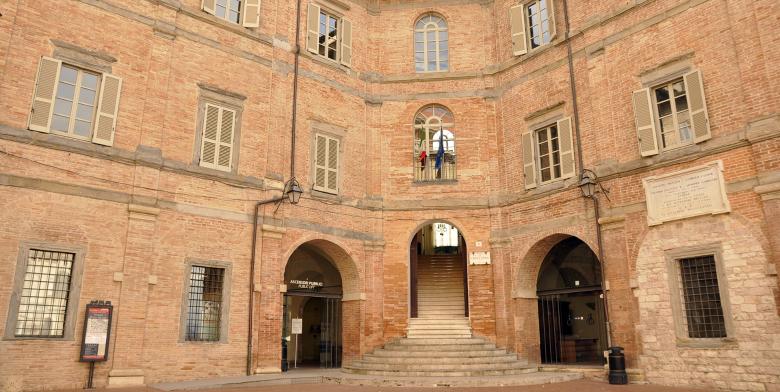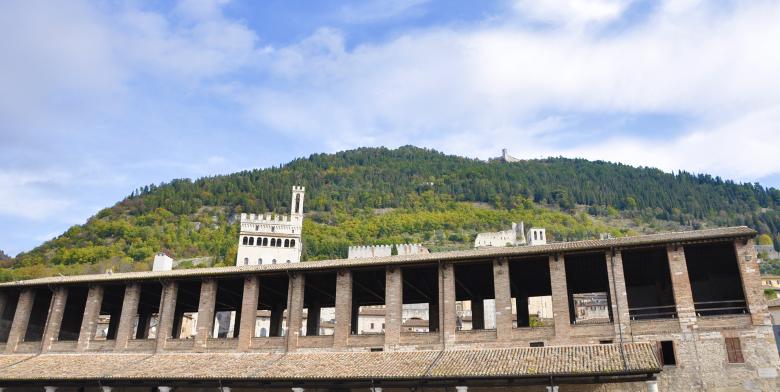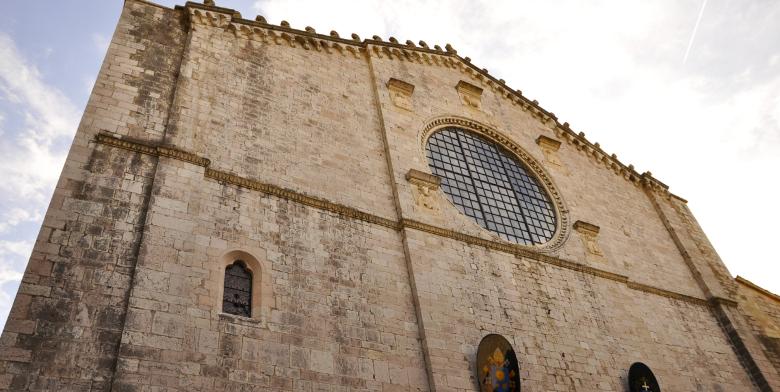Jahrhundert, die Chiesa di San Francesco und die Piazza Quaranta Martiri. In diesem Gebiet wurden eine Reihe von Strukturen gefunden, die mit der ersten Bauphase aus den Jahren zwischen dem 2. und dem 1. Jahrhundert vor Christus stammen, und die in die Zeit der Planung des neuen Stadtteils und einer thermischen Anlage fallen. Weiter nördlich wurde das Gebiet von einem großen auf mindestens zwei Ebenen gebauten Domus mit Mosaik- und Signinum-Böden besetzt. Unter dem Palazzo Vispi und seiner unmittelbaren Umgebung sind einige Überresten eines Domes mit Säulenhalle und auch einige Grundpfeiler zu einem dazugehörigen Säulengang in Richtung des Theaters zu sehen, das zu diesem Zeitpunkt eine Art Pflasterstein beinhaltete, der „Basolato" genannt wird.
Weiter nach Süden, unter den zahlreichen Domus (einige Teile können nicht besucht werden) entlang der Via Buozzi liegt der bedeutendste und bemerkenswerteste Domus, der aufgrund eines mit Mosaik gepflasterten Raumes hervorsticht. Dieses zeigt eine Venere Marina mit Partnerin oder Domina, begleitet von Bacchus, der den Wein einschenkt – ein Bild, das als „Bankett" bekannt ist. Das Emblem wurde zwischen dem 3. und 4. Jahrhundert AD eingesetzt, zusammen mit der Renovierung des Hauses, die in einer Epoche der Spätantike geschah. Reste eines Domus sind innerhalb des Antiquarium zu sehen, wo der verbreiterte Raum mit reichem Mosaikboden aus gemusterten, schwarz-weiß geometrischen Elementen ausgestattet ist, in denen ein dekoratives Muster von kleinen zentralen polychromen Mosaiksteinen eingebaut wurde (die sogenannte „Vermiculatum"-Technik), die die Episode des Schiffes (in dem derzeitig das archäologischen Museum von Perugia liegt) von Odysseus und Scilla darstellt. Es kann zum Ende des 2. Jahrhunderts datiert werden und stammt aus einem bildlichen Modell der hellenistischen Zeit. In der Mitte des Guastuglia-Gebietes steht das Theater (1. Jahrhundert vor Christus), eines der geräumigsten Theater aus dieser Zeit mit einem Auditorium mit einem Durchmesser von mehr als 70 Metern, das 6000 Zuschauer fasste. Südwestlich des vorgesehenen Theaters hat man eine Strecke in der Terrassenmauer entdeckt, mit einer sogenannten „Vittata"-Bauart, welches in diesem Teil die alte römische Stadt begrenzt. Zwischen diesem Sektor und der Kirche San Biagio wurde ein großes Abbild aus Keramik (auf Anfrage zu besuchen) mit identifizierten Materialien aus der archaischen Zeit und dem Ende des 2. Jahrhunderts entdeckt. Entlang der Via Ubaldi befindet sich das Mausoleum „Pomponio Grecino", das fälschlicherweise den Mitgliedern einer wichtigen Senatorenfamilie und dem Sohn eines Konsuls im 16. Jahrhundert n. Chr. zugeschrieben wird. In einem kleinen eingefügten Gebiet der Totenstadt wird der über neun Meter hohe Kern aus Zementwerk konserviert. Das Denkmal stammt aus dem 3. Viertel des 1. Jahrhunderts vor Christus. In der archäologischen Abteilung des Stadtmuseums, die in den Räumlichkeiten des Palazzo dei Consoli eingerichtet wurde, werden die Geschehnisse rund um die Stadt und ihr Umlandes von der Vorgeschichte bis ins Hochmittelalter dargestellt; in der oberen Halle sind die Iguvine-Tafeln ausgestellt, einige der Grundsatzdokumente der umbrischen Sprache und der religiösen Rituale, zwischen dem Ende des 3. und dem Beginn des 1. Jahrhunderts vor Christus, und die aus im Jahre 1444 entdeckten sieben Bronzetafeln in der Nähe des römischen Theaters.
Hinweise und Tipps
Für den Besuch in der Gegend wenden Sie sich bitte an das Antiquarium
Via del Teatro Romano
06024 Gubbio
www.archeopg.arti.beniculturali.it





















.jpg/01582038-916e-5583-03f0-bca1ccbd202b?width=456)












